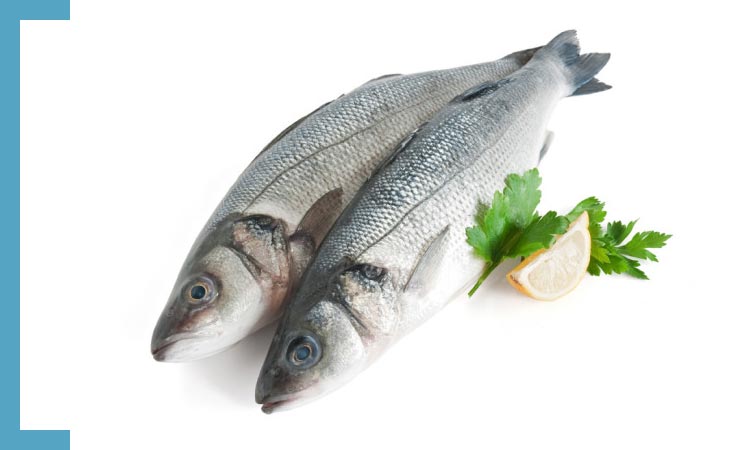
Scientific name: Dicentrarchus labrax
A strictly coastal species, it populates all types of environments near the shore, both with hard and sandy bottoms. Especially in summer it moves into the brackish waters of lagoons and river mouths and can reach completely fresh water. Aquaculture is the main production method, although more than 10% of the total seabass production in the world still comes from fishing.
Characteristics
The body is tapered slightly compressed on the sides, silvery gray on the back, silvery on the sides and white on the belly. The head is elongated and the mouth is large with lots of teeth and a strong jaw. The distinctive characteristics of this species are the forehead, which is straight and the two dorsal fins clearly different, the first dorsal is formed by 8-10 spiny rays, the second by 12-13 soft rays. The body and head is covered with quite small but clearly visible scales. The maximum documented length for this species is 103 cm, but on average it measures around 50 cm, while the weight can reach 12 kg. The sea bass is a gregarious fish while young but the adults are solitary.
Habitat
Common species in the Mediterranean Sea, usually found in cold, well oxygenated waters. Strictly coastal, it rarely goes deep and populates all kinds of environments. It supports different concentrations of salinity and moves, especially in summer, into the brackish waters of lagoons and the mouths of rivers. The sea bass is a species highly dependant on the seabed, particularly at night, when it hunts for molluscs, annelids and crustaceans. In the fish market it is one of the most prized species and, to meet the great demand of the market, in many Mediterranean countries it is raised in intensive and extensive marine farms. The minimum size for fishing and marketing according to Reg. EC 1967/2006 is 25 cm.
Sources:
- https://it.wikipedia.org/wiki/Dicentrarchus_labrax
- http://ec.europa.eu/fisheries/marine_species/farmed_fish_and_shellfish/seabass/index_it.htm
- http://ec.europa.eu/fisheries/documentation/publications/factsheets-aquaculture-species/seabass_it.pdf
- http://www.chioggiapesca.it/it/?pesci=branzino-spigola
- http://www.pescaricreativa.org/notizie/articoli/item/215-misure-minime-pesca-in-mare.html
 English
English


